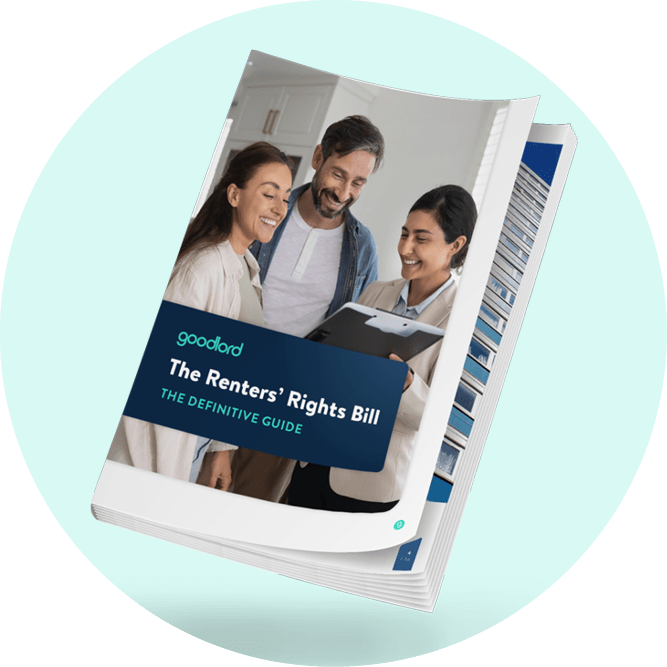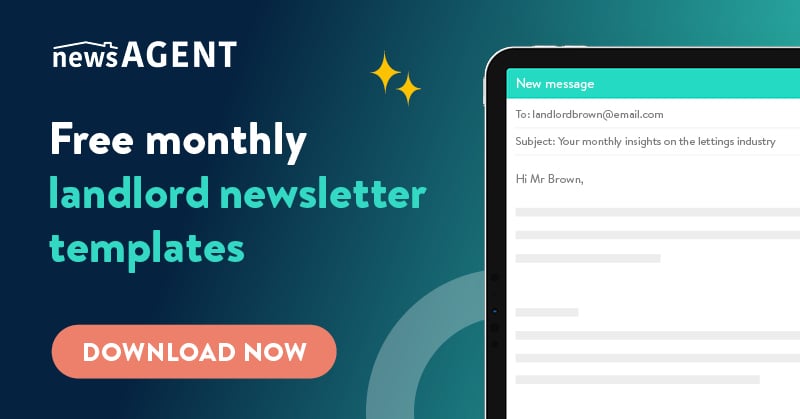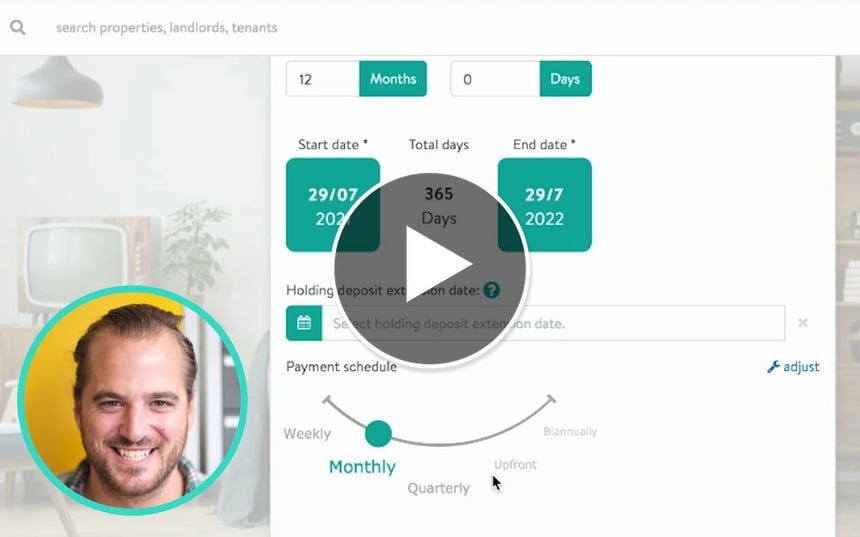Rent a Room Scheme UK: Guide for tax-free income
You can earn £7,500 tax-free by renting a furnished room in your home. Learn how the Rent a Room Scheme works, who’s eligible, and when to opt in or out.
Originally published: April 2024
The Rent a Room Scheme allows you to let a spare room in your home, tax-free. Here’s everything you need to know.
If you’ve got a spare room sitting empty, it could be earning you money rather than gathering dust. With mortgage rates climbing and the cost of living biting hard, more people are looking for ways to make their homes work harder for them. In fact, between 2021 and 2024, the number of homeowners taking in lodgers across the UK shot up by 89%.
One of the simplest ways to unlock that extra income is through the government’s Rent a Room Scheme. It allows you to earn up to £7,500 a year tax-free by renting out a spare room in your residence.
Whether you’re a landlord, a homeowner, or a tenant (with permission from your landlord), you can take advantage of this scheme. No business registration. No complex paperwork. No tax. If you stay within the threshold, the relief applies automatically.
In this guide, we’ll walk you through everything you need to know about the Rent a Room Scheme: who’s eligible, how to apply, and what happens if you earn more than the limit.
Key takeawaysBefore diving into the details, here’s what you need to know:
|
- What is the Rent a Room scheme?
- Who's eligible for a Rent a Room Scheme?
- What are the tax benefits and income limits of the Rent a Room Scheme?
- What are the pros and cons of the Rent a Room Scheme?
- How to apply for the Rent a Room relief
- What do you need to tell HMRC for the Rent a Room Scheme?
- Does a lodger pay council tax for the Rent a Room Scheme?
- Can landlords use the Rent a Room Scheme for their short-term lets?
- Conclusion
- FAQs
What is the Rent a Room Scheme?
The Rent a Room Scheme is a government initiative introduced in 1992 to encourage homeowners and tenants to rent out spare rooms in their primary residence. The goal of the scheme is to boost the supply of low-cost accommodation across the UK and help households earn additional income.
Under the scheme, you can earn up to £7,500 a year tax-free by letting out a furnished room in your home. However, if you share ownership of the property, the allowance is split at £3,750 each. This limit applies regardless of how many months you rent the room during the tax year.
Who’s eligible for the Rent a Room Scheme?
You don’t need to be a homeowner to qualify for the scheme, and it is open to most people living in the UK who want to rent out a furnished room in their main home. Whether you’re a homeowner, a tenant, or even running a small guest house, you may be able to benefit, so long as a few key conditions are met.
You can use the Rent a Room scheme if:
- You’re living in the property as your primary residence
- You’re renting out a furnished room to a lodger (someone who shares common areas like the kitchen or bathroom)
- You’re a tenant with permission from your landlord
- You’re running a guest house or B&B, or offering services like meals or cleaning, and the activity counts as a trade
You can’t use the Rent a Room scheme if:
- The room is not physically part of your main home (for example, a self-contained annexe with its own kitchen and bathroom)
- The room is unfurnished
- The space is used as an office or for business purposes
- You’re living abroad and renting out your UK home remotely
There’s no limit to how many rooms you can rent out under the scheme, but the £7,500 tax-free threshold applies across all rooms combined.
If you tick all the right boxes, the scheme offers a simple way to earn extra income, without needing to register a business or file complex tax returns.
What are the tax benefits and income limits of the Rent a Room Scheme?
The Rent a Room Scheme offers one of the most generous tax breaks available to individuals renting out part of their home. The Government website says, “If your gross receipts are less than £7,500 (or £3,750), you’re automatically exempt from tax on that income”.
Simply put, you don’t need to register a business or fill out extra forms. If your rental income is below the limit, you simply don’t pay tax on it, and you don’t need to declare it to HMRC.
What if you rent more than the Rent a Room limit?
If your rental income exceeds £7,500, you’ll need to choose how you want to be taxed:
- Opt in to the scheme: You pay tax only on the amount above the threshold. You can’t claim any expenses.
- Opt out of the scheme: You declare your full income and deduct allowable expenses. This could reduce your taxable profit, especially if your costs are high.
Let’s look at two examples to see how this works in practice:
Example 1: Income over £7,500 but low expenses
Sarah rents out her spare room in London to a university student. She earns £8,000 over the tax year. Her only expenses are £500 for cleaning and occasional repairs. Since her costs are minimal, she opts into the Rent a Room Scheme.
This means:
- She gets the £7,500 tax-free allowance
- She only pays tax on the remaining £500
- She doesn’t need to submit detailed expense records or claim deductions
As Sarah’s expenses are low, opting in keeps things simple and avoids extra paperwork.
Example 2: Income over £7,500 but high expenses
James runs a small guest room setup in his home in Manchester, offering breakfast and weekly cleaning. He earns £10,000 in rental income, but spends around £9,000 on food, laundry, insurance, and maintenance. James chooses to opt out of the scheme and declare his actual income and expenses.
This means:
- He reports the full £10,000 income
- He deducts £9,000 in allowable expenses
- He only pays tax on the remaining £1,000 (£10,000 minus £9,000), instead of £2,500 (£10,000 minus £7,500), if he had opted in
Because James’ expenses are substantial, opting out reduces his taxable profit more than the flat £7,500 allowance would.
What if you made a loss in the Rent a Room scheme?
If you decide to rent your room but, over the course of a year, you make a loss, the Government says it may be better to pay tax the usual way.
Whether your expenses cost more than the rent you took in, or the rise of electricity and gas has caused a loss, it might be better for you to pay the taxes “on your receipts less expenses”.
Keep in mind:
- You can’t claim a loss if you’ve opted into the Rent a Room Scheme
- You’ll need to keep records of all expenses and file a Self Assessment tax return
Should you opt-in or opt-out?
Here’s a quick decision guide on whether you should opt in or opt out of the Rent a Room scheme:
| Scenario | Opt in or opt out | Why |
| Income under £7,500 | Opt in | No tax, no paperwork |
| Income over £7,500, low expense | Opt in | Simpler, less admin |
| Income over £7,500, high expenses | Opt out | May reduce taxable profit |
| Made a loss | Opt out | Allows you to declare the loss |
What are the pros and cons of the Rent a Room Scheme?
The Rent a Room Scheme comes with its upsides and trade-offs. It’s a brilliant way to earn extra income without getting tangled in tax paperwork, but it’s not always the best fit for everyone. Here’s a balanced look at what works in your favour, and what to watch out for.
Pros of the Rent a Room Scheme
- Tax-free income up to £7,500 - The headline benefit is hard to ignore. You can earn up to £7,500 a year tax-free by renting out a furnished room in your primary home.
- Automatic relief - If your rental income stays under the limit, the relief applies automatically. You don’t need to opt in or notify HMRC, just enjoy the earnings.
- Flexibility to opt in or out - Whether you decide to opt in or out, you’re not locked in. Each year, you can switch based on what’s most tax-efficient for you. If your income exceeds the threshold, you can choose to:
- Opt in and pay tax only on the amount above £7,500
- Opt out and declare your actual income and expenses
- No need to register a business - Unlike running a formal rental operation, you don’t need to set up a business or register as a landlord.
Cons of the Rent a Room Scheme
- No expense deductions - If you opt into the scheme, you can’t claim any expenses. That means costs like repairs, maintenance, cleaning, or replacing a broken boiler come out of your own pocket, even if they’re directly related to the rental.
- Not ideal for high-cost rentals - If you spend a lot on the room, like paying for regular cleaning or a recent renovation, you won’t be able to claim those costs under the scheme. For example, if you earn £9,000 but spend £3,000 on upkeep, opting out might save you more in tax than sticking with the flat £7,500 relief.
- Can affect means-tested benefits - If you claim benefits like Universal Credit, Housing Benefit, or Council Tax Reduction, rental income from the scheme can impact what you receive.
- Doesn’t cover self-contained units - The scheme only applies to rooms within your main home. If you’re renting out a separate annexe or studio with its own kitchen and bathroom, you won’t qualify.
How to apply for the rent a room relief
Applying for Rent a Room Relief is fairly straightforward, but the process depends on how much you earn from renting out your room.
Manual claim: income over £7,500
If you earn more than £7,500, you’ll need to actively claim Rent a Room Relief through your Self Assessment tax return. Once you opt in, the relief continues each year until you choose to withdraw it.
It is to be noted that you must make the claim by January 31 following the end of the tax year. For example, if the tax year ends on April 5, 2025, the deadline to claim is January 31, 2026.
| Rental income | Action required | Deadline |
| £7,500 or less | No action needed | N/A |
| Over £7,500 | Claim via self-assessment | January 31 following the tax year |
What do you need to tell HMRC for the Rent a Room Scheme?
When completing your tax return at the end of the year, you must tell HMRC if you want to be a part of the Rent a Room scheme. You can claim the allowance either by completing the option on your tax return or by declaring your rental income on the property pages of your return, just as a landlord would with any other rental income.
If you no longer want to use the Rent a Room scheme when your receipts are below £7,500 (or £3,750), you must tell HMRC within one year of January 31 following the end of the tax year.
Does a lodger pay council tax for the Rent a Room scheme?
No, the landlord/homeowner is responsible for council tax. However, they can include council tax costs as part of their rent.
The landlord must also tell their local council if they no longer live alone, or if their local authority has certain property licensing requirements.
Can landlords use the Rent a Room scheme for their short-term lets?
Currently, residential landlords can use the Rent a Room scheme for their short-term lets. As long as the rent taken over the space of the year amounts to less than £7,500 (or £3,750) a year, they can claim the Rent a Room scheme.
For landlords in London, the Rent a Room scheme can be useful for short-term landlords, as they can rent a room for up to 90 days a year.
Conclusion
The Rent a Room Relief in the UK remains one of the most straightforward ways to earn tax-free income from your home. With more households across the UK welcoming lodgers, it’s clear this scheme is helping people unlock real financial value from the homes they already live in.
FAQs
Q1 - Can I rent a room if I have a mortgage?
Yes, you can, but it’s best to check with your mortgage provider first. Some lenders may restrict subletting or require you to notify them before taking in a lodger.
It’s also wise to inform your home insurance provider, as having someone else living in your home could affect your policy.
Q2 - Do I need to declare Rent a Room income?
If your rental income is £7,500 or less in a tax year, you don’t need to declare it, and the Rent a Room Relief applies automatically.
However, if you earn more than £7,500, you’ll need to file a Self Assessment tax return and choose whether to opt in or opt out of the scheme.
Q3 - Is the Rent a Room Scheme better than the property allowance?
It depends on your situation. Both schemes offer tax-free allowances, but you can’t use both for the same income. Here’s a quick comparison:
| Feature | Rent a Room Scheme | Property allowance |
| Tax-free limit | £7,500/year | £1,000/year |
| Applies to | Furnished room in your primary home | Any property income (e.g. garden, garage let |
| Must live in the property? | Yes | No |
| Can you claim expenses? | Only if you opt out | Yes |
Q4 - Can I use the Rent a Room Scheme for Airbnb?
Yes, but only if the room is part of your main residence and is furnished. If you’re renting out a separate unit or using the property solely for short-term lets, you may not qualify.
Q5 - What happens if I rent multiple rooms?
Yes, you can rent out more than one room in your main residence. The £7,500 tax-free threshold applies to your total rental income, not per room. So, if you rent two rooms and earn £4,000 from each, your total income is £8,000, which is above the threshold —and you’ll need to decide whether to opt in or opt out.
This article is intended as a guide only and does not constitute legal advice. For more information, visit gov.uk.









